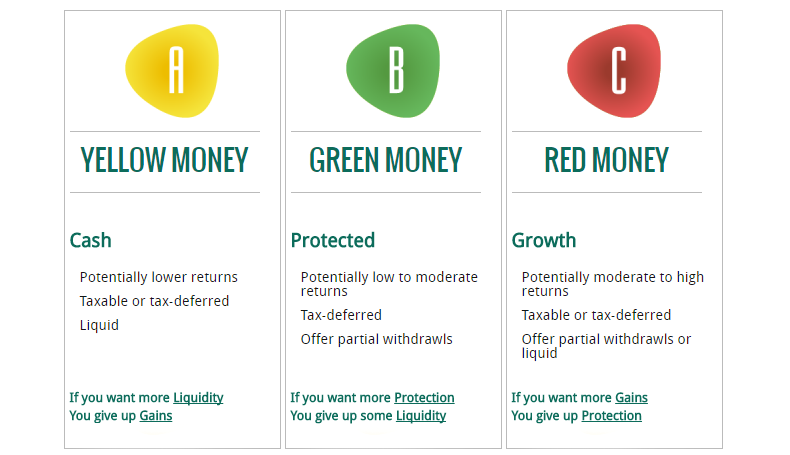Where will your retirement money come from? If you’re like most people, qualified-retirement plans, Social Security and personal savings and investments are expected to play a role. Every hard worker’s dream is to have comfortable, stable, and secure retirement years. And now because we will likely live much longer, healthier lives, we can expect to spend more time in retirement than our parents and grandparents did. Once you have estimated the amount of money you may need for retirement, a reliable approach involves taking a close look at your potential retirement-income sources.
When you plan your finances and lifestyle choices, it becomes much more likely to achieve that dream of a secure and happy retirement. We can help you build wealth, minimize market losses, protect your principal, and generate retirement income you can’t outlive.
The Financial ABC’s Of Retirement Planning
A Simple to Understand, Non-Wall Street Approach to Retirement Planning

A Few Questions:
- How do you the conservative investor know where to allocate your money to avoid the volatility which costs you sleepless nights?
- How do you know which assets to use and why you might use them?
- How does an individual asset fit into the total picture
- Can an average investor really understand why his or her money is placed in one investment over another?
- Do you need a degree in finance to understand it?
- Is there a simple way to understand how to allocate your assets to accomplish your goals?
The ABC Planning Model
Designed to help the conservative investor answer these questions.
Typically there are three categories of assets that people invest in for retirement. We simply divide these categories using A, B, and C, which represent the three types of assets, and in the following pages on this site we’ll describe the three types and you simply choose what percent you would want in each category.
Now let’s take a glance at what you gain and lose in each column. There is a “Risk-Reward” for each column, which means, you stand to gain or lose something by placing assets in each scenario.
Very simply, in Column A you give up GAINS to get more LIQUIDITY. In column B you give up some LIQUIDITY to acquire PROTECTION from risk, and in Column C you give up PROTECTION for higher potential GAINS, as illustrated below.
In the end, protection and simplicity are keys in the ABC’s, making it easy to determine how much liquidity and risk a conservative investor desires. In the further webinars we’ll discuss in detail each of the ABC category’s assets.
